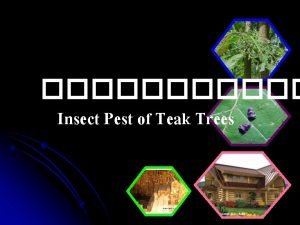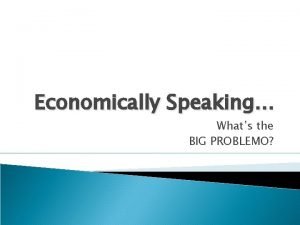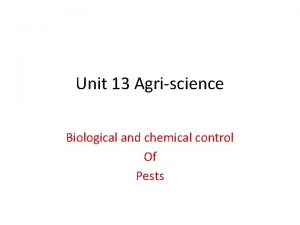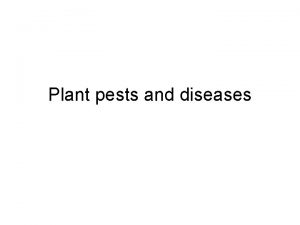Module II Economically Important Insect Pests Lesson 4



- Slides: 3

Module II: Economically Important Insect Pests Lesson 4: Stinkbugs Adults stink bug Egg and Nymph Life History - Stink bugs overwinter as adults and become active in spring when temperatures rise above 21 degrees Centigrade (above 70 degrees F). Each female deposits up to several hundred eggs, usually in mid- or late June. These eggs are laid in clusters (averaging 36 eggs) primarily on leaves and stems but also on pods. Nymphs hatch from these eggs and pass through five instars before becoming adults. Approximately 5 weeks elapse between hatching and adult emergence. Two generations per year occur in Arkansas while only one generation per year has been reported in Virginia. In any case, stink bugs generally reach high population levels in late September or early October.

Module II: Economically Important Insect Pests Lesson 4: Stinkbugs Damage: Stink bugs inflict mechanical injury to the seed as well as transmit the yeast-spot disease organism. The degree of damage caused by this pest depends to some extent on the developmental stage of the seed when it is pierced by the stink bug's needlelike mouthparts. Stink bugs feed on plant fluids by inserting their needlelike mouthparts into stems, leaves or seed pods. While feeding, they inject materials into the plant to aid in digestion and sap removal.

Module II: Economically Important Insect Pests Lesson 4: Stinkbugs CONTROL: Stink bugs have some natural enemies, including several common species of birds. As their name implies, stink bugs emit an unpleasant odor and repel many predators. To determine when chemical control is necessary, shake the plants on about 1 meter (3 feet) of row over a muslin cloth and count the number of stink bugs. The economic threshold varies from 1 stink bug per 0. 3 meter (1 ft) of row to 1 bug per 0. 9 meter (3 ft) of row, depending upon state extension service recommendations.





